Olpro Stafford 2.0 review: 2-person backpacking tent made from plastic bottles
Good for backpacking couples, this mid-range, 3-season shelter is constructed from recycled trash
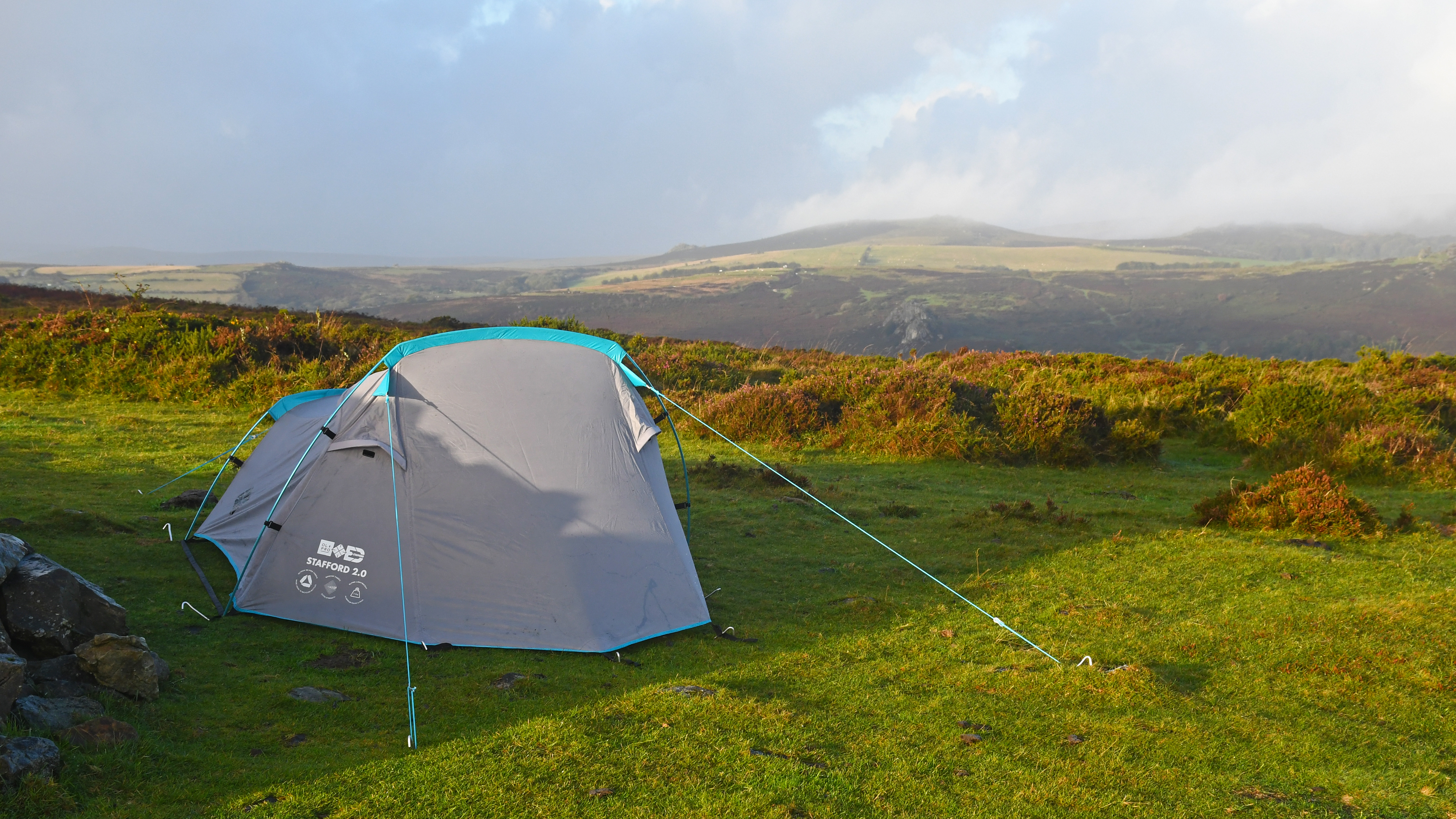
The Stafford 2:0 is an affordable, versatile tent suitable for solo or snug two-person use. Ideal for backpacking, trekking, and camping, it's easy to pitch, weather-resistant, and made from 76 recycled plastic bottles. Though not the lightest or most spacious option, it offers solid protection and practical features, with some elements feeling a bit unnecessary.
-
+
Easy to pitch
-
+
Black-out inner
-
+
Made from recycled plastic bottles
-
+
Good ventilation
-
-
Not the lightest or smallest backpacking tent
-
-
Small for two adults
-
-
One door only
-
-
Basic pegs
Why you can trust T3

British brand Olpro are a down-to-earth producer of camping equipment including awnings and tents that are often made using a fabric spun from recycled bottles (as is the case with this shelter, which is impressively made from 76 plastic bottles).
As a rule, Olpro appears to prioritise functionality and form over flashiness and also seems to have a genuinely decent approach to eco-friendly manufacturing processes and materials, as well as offering spares, repairs and preloved gear to avoid pointless production – all of which is to be celebrated and supported.
For their latest range, they collaborated with the English explorer and celebrity survivalist Ed Stafford to produce several shelters designed for hikers, backpackers and weekend adventurers.
I’ve followed Ed’s often hair-raising shenanigans since he spent two years trekking the length of the River Amazon, digging parasites out of his own head with a knife and dealing with numerous other wild inconveniences. I even featured him on the cover of the magazine I edited back then, and when we spoke to him fresh from the jungle, he was absolutely lovely.
Since then, he has carved a whole career out of being able to cope with extreme discomfort in the outdoors, but I’m sure Olpro were hoping that having his name associated with their new range of tents would lead to people having far more enjoyable alfresco experiences than Ed is used to enduring (in the name of entertainment for the rest of us).
Suffice to say, I was very much looking forward to testing the Stafford 2:0, which – as the name suggests – is the 2-person shelter in the range (which also includes a solo shelter and tents for 3, 4, 6, and 8 people), to see how it compares to the best backpacking tents on the market.
Olpro Stafford 2.0 review
Price and availability

The Stafford 2:0 is available now, directly from the Olpro website. The full asking price is £230 I the UK, $310 in the US and AU$515 in Australia, but it’s curently possible to get it for as low as £120/US$150/AU$250 respectively, and if you go into it eyes wide open, aware of the pros and cons mentioned above, then it’s actually a very good buy at that price.
Get all the latest news, reviews, deals and buying guides on gorgeous tech, home and active products from the T3 experts
Specifications
- Guide price: £230
- Style: Pole-based tunnel tent
- Pack size: 45 x 10 x 14cm
- Pitched dimensions (L x W x H): 265 x 175 x 100cm
- Weight: 2.2kg
- Seasons: 3
- Capacity: 2 person
- Vestibules: 1
- Flysheet hydrostatic Head rating: 5,000mm
- Fly fabric: Oltech Repro 210T RPS
- Groundsheet:
- Poles: Alloy
- Pegs: Lightweight Alloy
- Pitch time: 10 minutes
- Colour: Wild Dove Grey & Blue Atoll
Design and materials
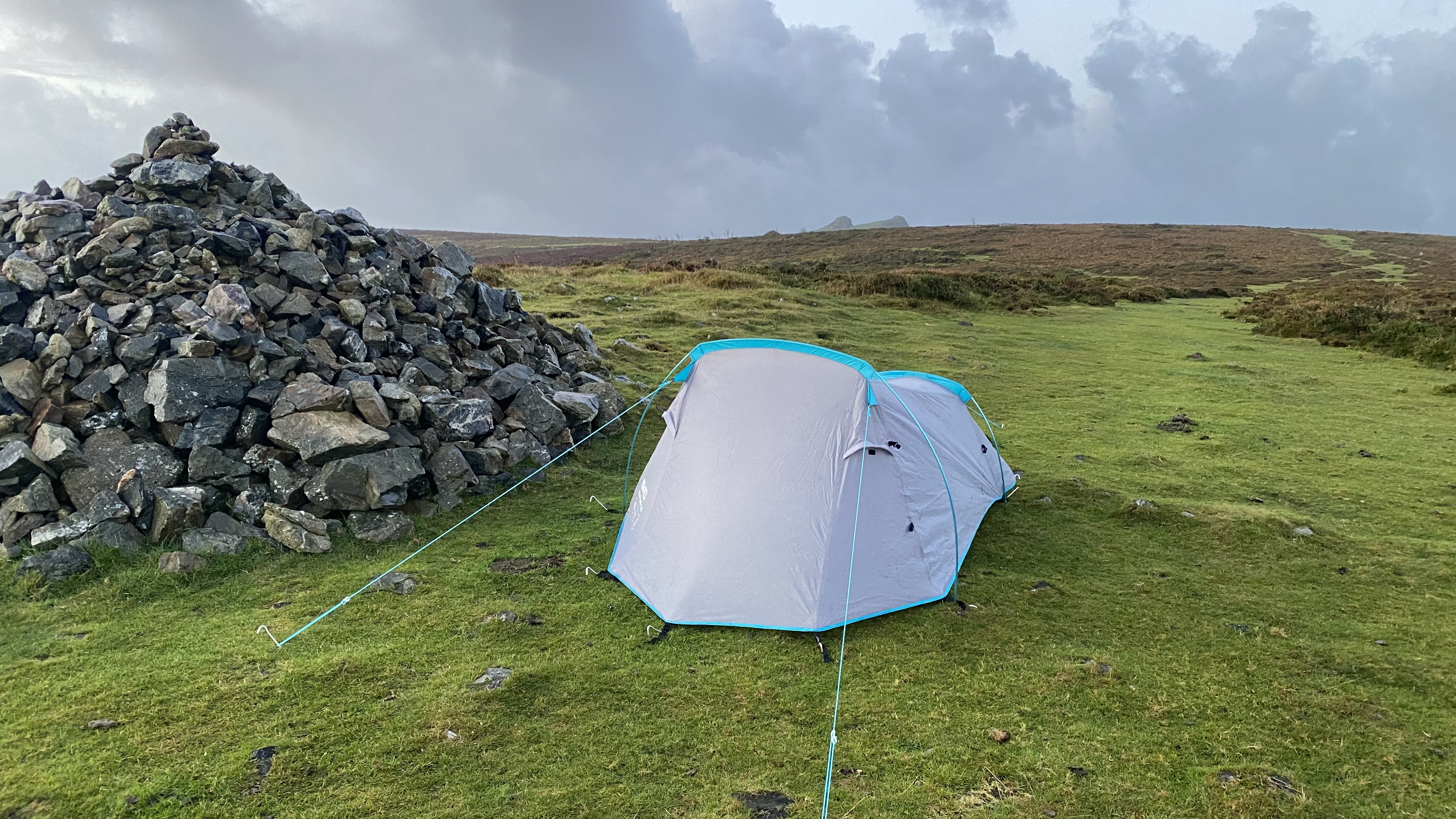
The tent comes in a weatherproof bag and can be carried on the outside of a hiking backpack if you’re struggling to fit your sleeping bag, camping mat, lightweight stove and everything else in (although, personally I prefer to avoid having things hanging off my pack).
The Stafford 2.0 is a two-pole, two-layer tunnel style tent, which you can pitch fly first (the poles go through sleeves in the fly) and then hang the inner with a series of hooks and toggles. After the first use, it’s possible to leave the inner attached to the outer and put the whole thing up at once next time you use it, which greatly speeds up the pitching process. It also makes dropping and packing the tent away quicker, although the various hooks and cords can get in a bit of a tangle.
Fairly unusually, pegging out the guy ropes is not optional on this tent. In order to pitch the shelter, you must tension the three guys – two at the ‘head’ end and one at the ‘foot’ end – otherwise it won’t stand up. I didn’t experience any problems with this pitching process (at least not after I was supplied with the rear guy rope, which was initially missing) but the design doesn’t lend itself to strength in extreme conditions. If the peg holding the rear guy rope failed, half the tent would collapse (dome tents are more resilient to challenging conditions such as high winds). However, once you get the hang of it (and it’s not rocket science) it’s a very quick tent to put up.
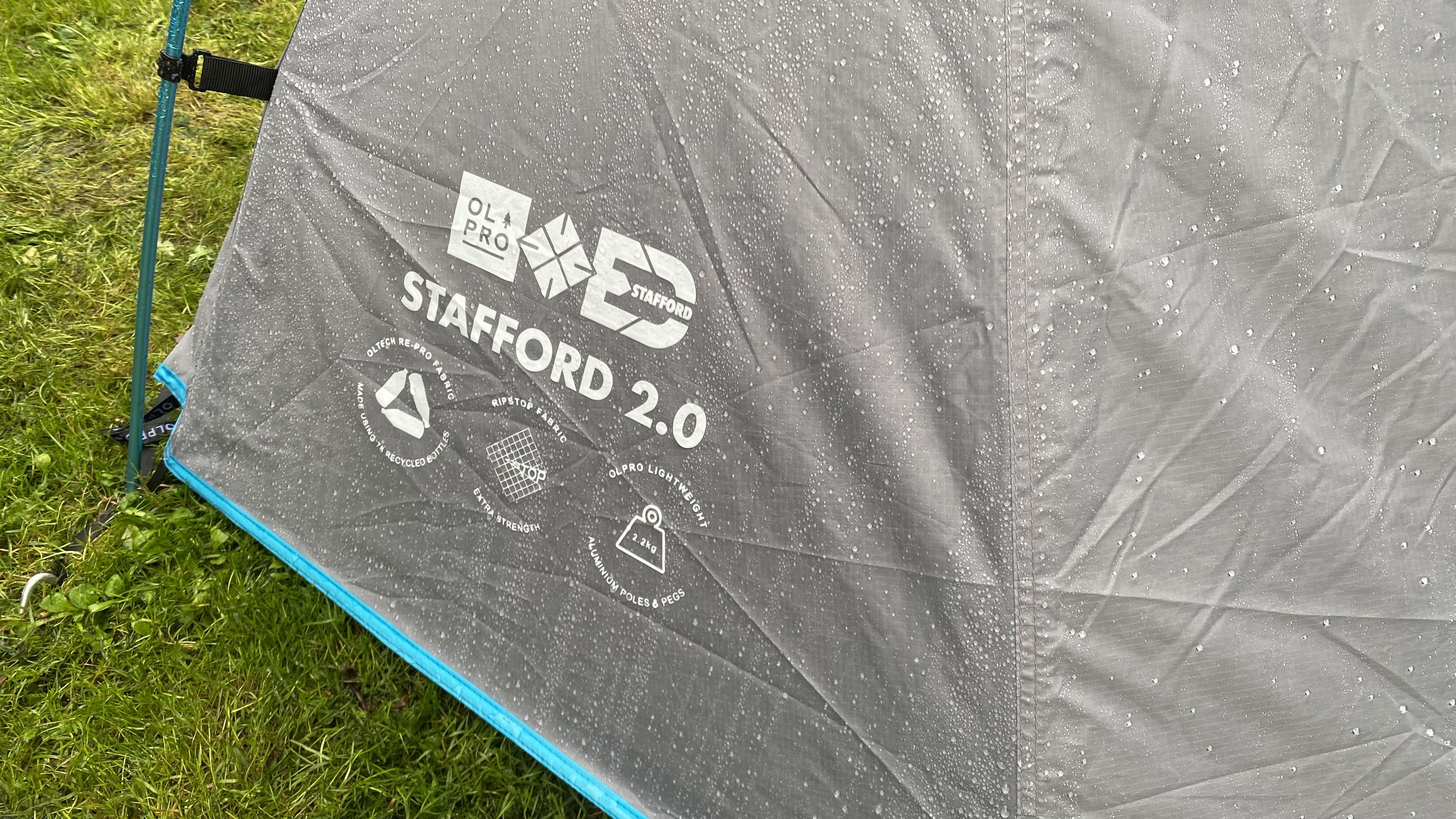
The flysheet is made with Oltech Repro 210T RPS fabric, a robust ripstop material spun from repurposed single-use plastic bottles, making it a more sustainable product than many tents in this price and performance-level bracket. It’s been coated with a non-specified treatment, which gives it a hydrostatic head rating of 5000mm. The inner is made with a blackout material, and it features a fly-mesh fabric – you can unzip the main door for ventilation and still have a bug screen in place. Poles and pegs are both alloy, so they’re reasonably lightweight (if a bit basic, chunky and clunky to carry).
Strength straps run between the four corners, and these also enable you to tension the inner while leaving a space for the small awning. The gap between the inner and the fly is decent, so there are no issues with condensation causing moisture on the inside.
Performance on the trail
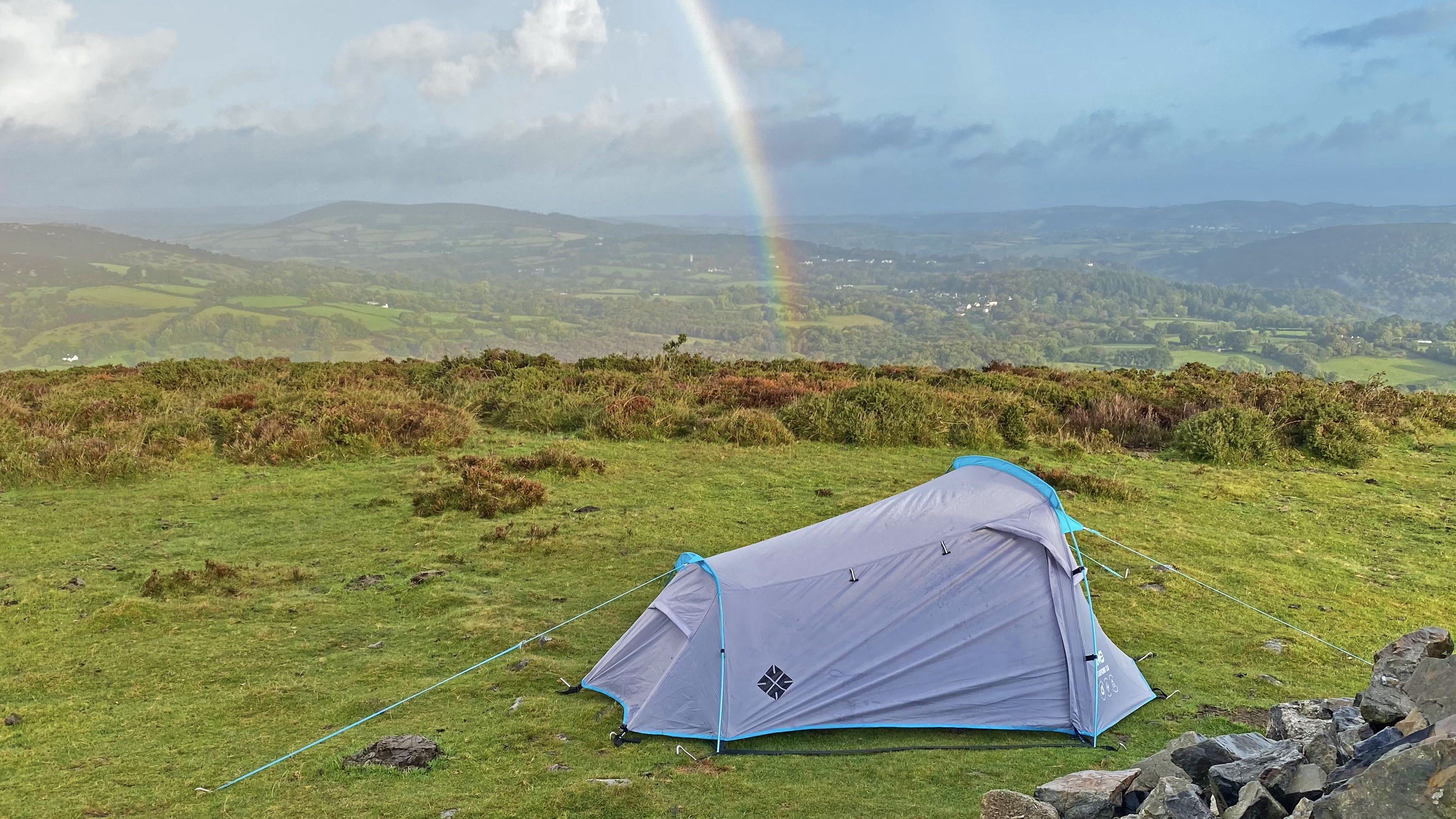
After pitching it in the garden and giving the Stafford 2.0 a trial run close to home, I packed the tent up and went on a proper adventure on Dartmoor (wild camping on the commons while I still can…). The planet had well and truly spun into autumn by this time, and the weather forecast was pretty wild, so I was confident I’d be able to put this 3-season tent through a proper test.
Although this is a 2-person shelter, I was flying solo on this mini mission, and I must admit, I found the Stafford 2:0 a tad heavy and bulky compared to other backpacking tents I’ve used. Of course, if there are two of you on a trip, you can split the load.
Having pitched the tent twice before, I set up camp pretty quickly and soon had a brew going in the mini vestibule – the inclusion of which is a really nice touch on an otherwise quite compact 2-person tent.
You can obviously stash your backpacks in the small vestibule, but as far as the inner goes, it’s more of a 1.75 person tent really. It’s not uncommon for 2-person tents to be a bit cosy, but often such structures are made for minimalist fastpacking and mountaineering escapades, when every gram counts, whereas the Stafford 2:0 isn’t sufficiently light or small enough for such activities, nor is it strong or technical enough for high altitude adventures. Compounding this space problem is the fact that there is only one door, and it’s on the side – so if the person on the other side of the tent needs to get up to answer a call of nature in the middle of the night, they have to climb over their tent buddy to get out.
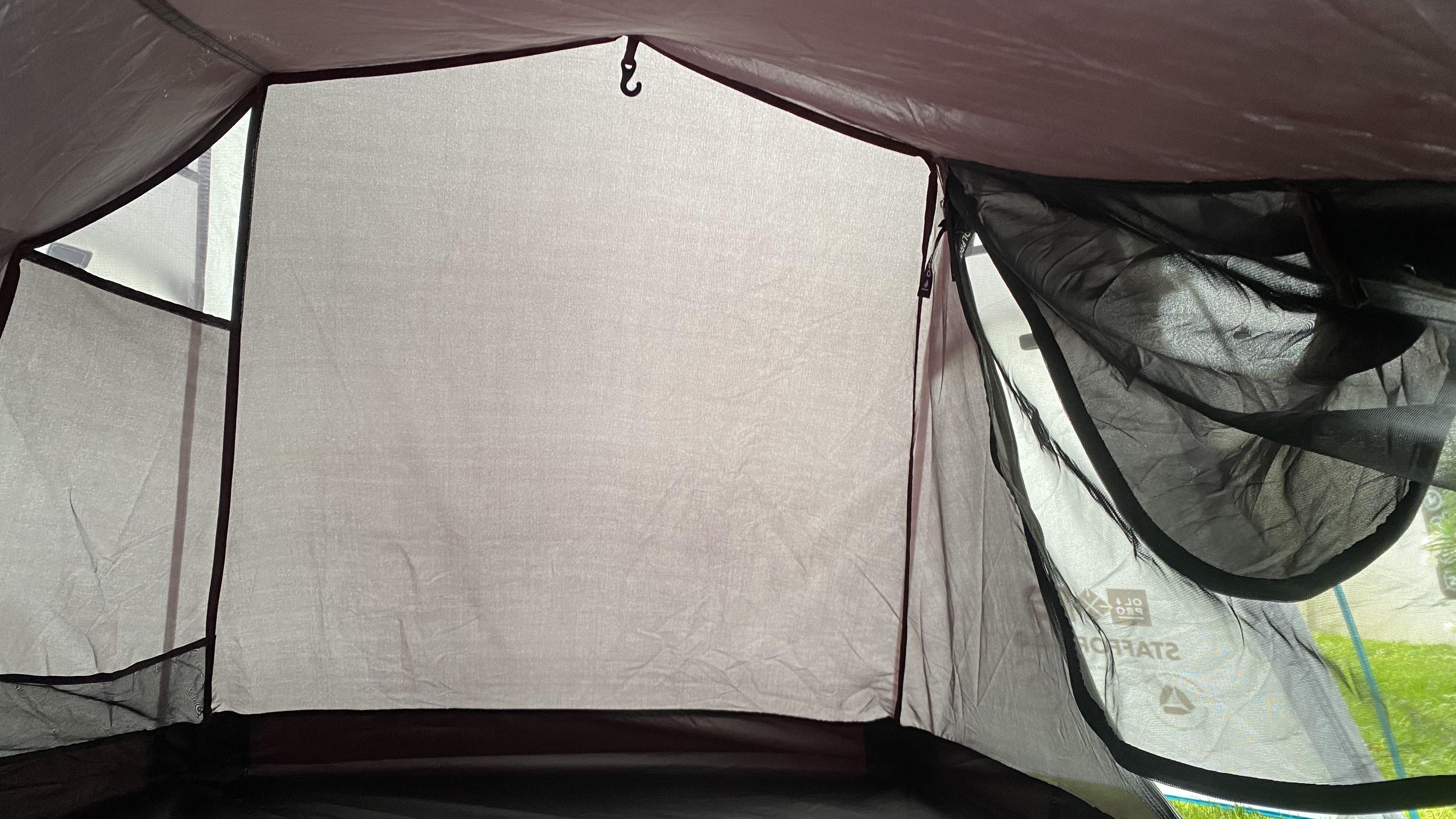
I really like the shape of this tent’s inner, which tapers away from a wide ‘head’ end to a more narrow ‘foot’ end. That said, I do find it rather strangely proportioned. It’s lovely and spacious for one person and a pack, so I was grand, but it’s a pretty tight squeeze for two. This, of course, depends on the dimensions and the dynamic of the two people involved – it’s probably perfect for hiking couples, so long as trail tantrums haven’t caused any ripples in the relationship, but if you’re a big hairy bloke and so is your tent mate, then it’s going to feel a bit cramped (I definitely can’t imagine two Ed Staffords getting in here).
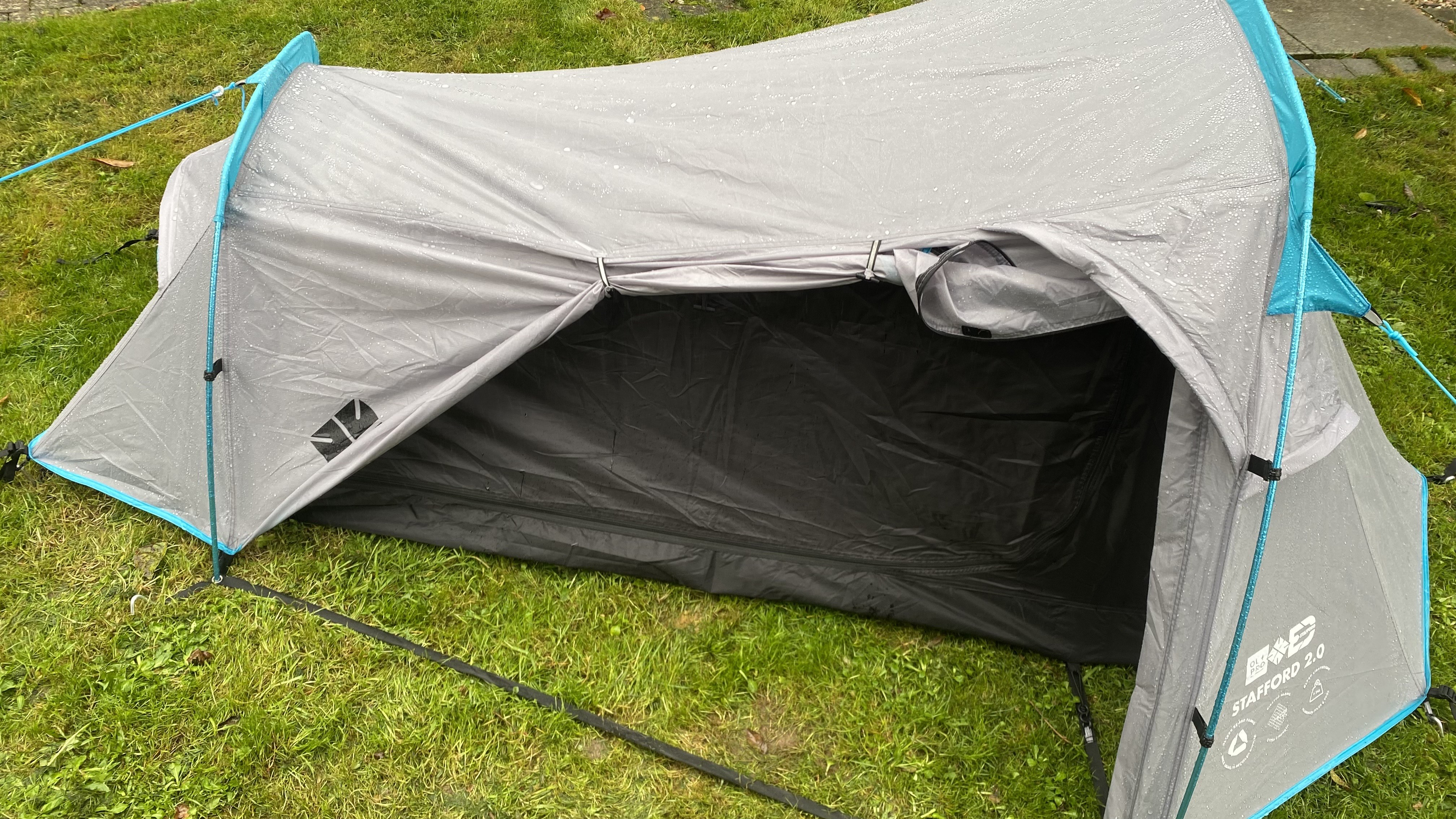
The tent is nice and dark in the mornings, so I wasn’t wide awake as soon as dawn broke. And yet there is a little window/vent at the foot end of the tent that you can prop open with a Velcro band to let both fresh air and some light in if you choose, which is a nice touch. There are pockets on the inside, for keeping things organised, plus rings and hoops for hanging up a torch, little camping lantern or a headlamp.
There is lot to like about the Stafford 2:0, though. I love the neutral colour of the flysheet, which isn’t exactly camo, but neither is it bright and obvious (in case you’re doing some stealth camping, which we might all have to on Dartmoor soon). And although it’s not very wide for a 2-berth tent, it’s plenty long enough for a tall camper to have a comfortable night.
Also, despite my reservations about the strength of the set-up (detailed above), it remained standing perfectly fine during a very blustery night on the top of a tor in the middle of Dartmoor, while the wind howled all around, even though the ground was so stony I struggled to sink the pegs very far into the ground. It was a wet and wild night, but I stayed completely dry, and the groundsheet felt nice and robust.
Verdict
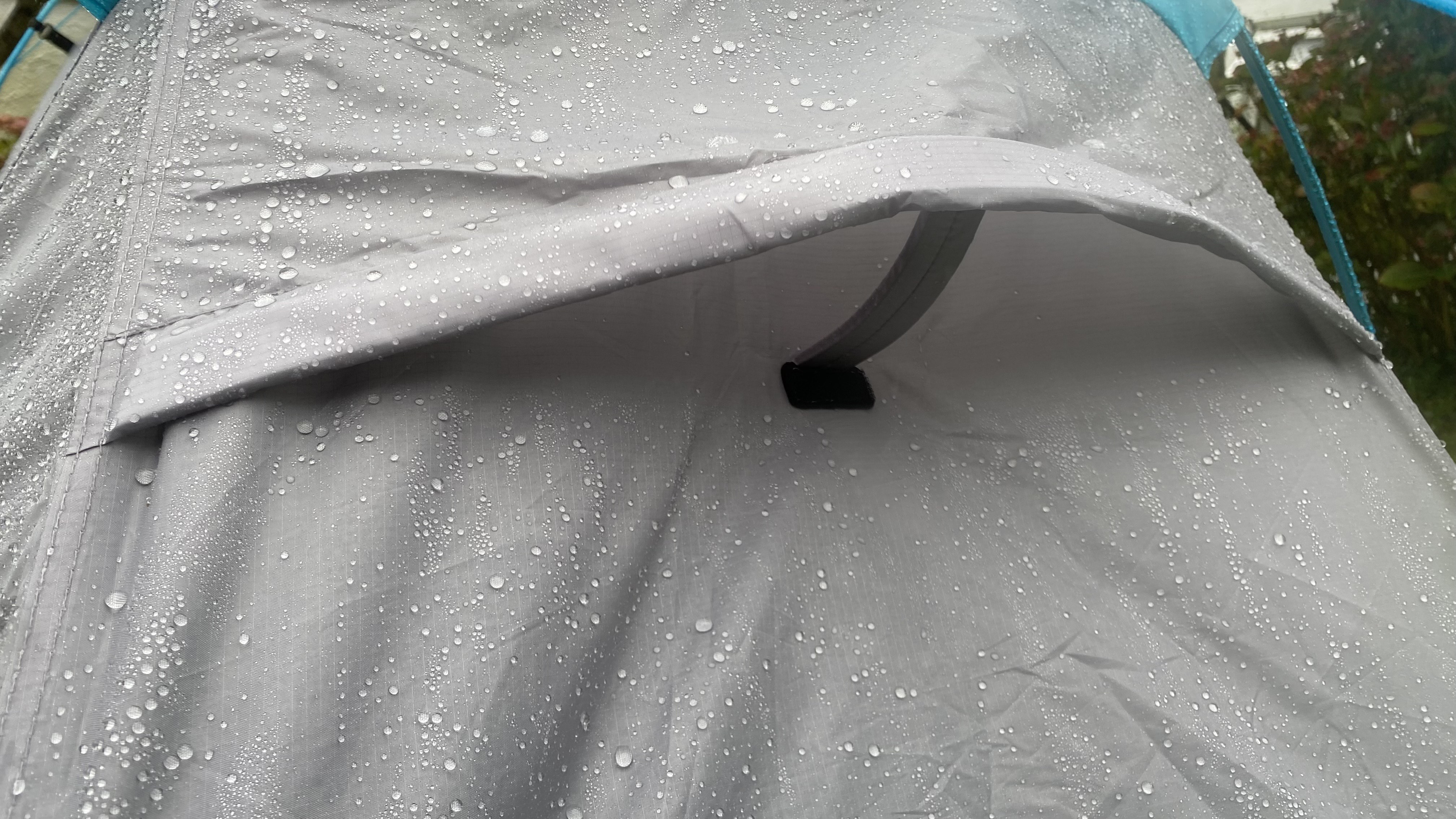
I very much like the ethos of Olpro and the character of Ed Stafford, and the fact that this range of tents is made from recycled plastic is fantastic, but having used it several times, I do feel this shelter could benefit from a few tweaks. As mentioned, the inner is a nice shape and beautifully proportioned for one camper, but the tent is a bit bulky and heavy for a solo backpacker to lug around on their own. A little small for two large adults, it’s ideal for camping couples and a parent going on an adventure with a child.
The vestibule is small but a very nice feature to have, yet it would be much better if there was a door on both sides. The groundsheet is decent, the fly is good and I found the entire tent to be properly weatherproof (even if the design causes me some concern in very strong winds).
The pegs, though, are basic. They are alloy, so they’re light, but they’re also big and bulky for a backpacking tent, and they bend pretty easily (as I found out on Dartmoor’s stony ground). there are a few other elements that baffled me too, like the buckled straps on the flysheet – these do allow you to tension the fly sheet until it’s a tight as a drum, which stops it flapping around in the wind, but a simple elasticated loop would have sufficed (especially if the guy ropes were a little better), and probably would have saved some weight. In this and some other respects, the Stafford 2:0 felt like a mid-range tent trying to be a bit more technical than it could or should be.
Also consider
If you’re looking for a much more lightweight 2-person tent, check out the excellent Sea to Summit Alto TR2 – although, be aware that this shelter is also fine for solo adventurers and cuddly couples, but can by cosy for two platonic hikers.
The Sierra Designs Meteor Lite is quite tight, too, but it does have a double door design.
The North Face Trail Lite 2-Person Tent offers considerably more room on the inside, and is a great option - but you will pay a bit more for it.
Alternatively, if you’re on a budget the Alpkit Ordos 2 offers generous amounts of sleeping space and relatively low carry weight (1.7kg) at a very affordable price.

Author of Caving, Canyoning, Coasteering…, a recently released book about all kinds of outdoor adventures around Britain, Pat Kinsella has been writing about outdoor pursuits and adventure sports for two decades. In pursuit of stories he’s canoed Canada’s Yukon River, climbed Mont Blanc and Kilimanjaro, skied and mountain biked across the Norwegian Alps, run ultras across the roof of Mauritius and through the hills of the Himalayas, and set short-lived speed records for trail-running Australia’s highest peaks and New Zealand’s nine Great Walks. A former editor of several Australian magazines he’s a longtime contributor to publications including Sidetracked, Outdoor, National Geographic Traveller, Trail Running, The Great Outdoors, Outdoor Fitness and Adventure Travel, and a regular writer for Lonely Planet (for whom he compiled, edited and co-wrote the Atlas of Adventure, a guide to outdoor pursuits around the globe). He’s authored guides to exploring the coastline and countryside of Devon and Dorset, and recently wrote a book about pub walks. Follow Pat's adventures on Strava and instagram.